The development of the Internet of Things and mobile internet technologies has led to an explosive growth of data at the network edge. The single computing resources based on the cloud computing model can no longer meet the requirements for real-time processing, security, and low energy consumption of big data. Against this backdrop, edge computing has emerged. Edge computing refers to a new computing model that executes computations at the network edge. Unlike cloud computing, edge computing can provide services close to the objects or data sources, characterized by low latency and high privacy.
In recent years, edge computing has gained widespread attention in academia and industry. Professor Shi Weishong’s team at Wayne State University in the United States first defined edge computing in May 2016. In the same year, the Association for Computing Machinery (ACM) and the Institute of Electrical and Electronics Engineers (IEEE) jointly sponsored and initiated the ACM/IEEE Symposium on Edge Computing (SEC). Subsequently, important international conferences such as MobiCom and INFOCOM began to include edge computing topics. In 2017, Amazon released the Greengrass platform, supporting the deployment of machine learning services at the edge. Following that, cloud platform providers such as Google, Microsoft, Alibaba Cloud, and Baidu released their respective edge computing software and hardware platforms. Open-source software projects like EdgeX and KubeEdge have also actively promoted edge computing, having a significant impact in the open-source community, academia, and industry. The development of edge computing in China has been nearly synchronous with the global pace. In November 2016, Huawei, along with several domestic and foreign enterprises, established the Edge Computing Industry Alliance. Internet companies like Alibaba Group and Tencent, as well as mobile operators such as China Mobile, China Unicom, and China Telecom, have all actively deployed edge computing strategies. The leading security video company Hikvision Digital Technology Co., Ltd. launched the AI Cloud framework in 2017, focusing on edge computing. Future research directions in edge computing include edge computing system platforms, cloud-edge task collaborative scheduling mechanisms, edge intelligent algorithms, and innovative applications of edge computing.
The core papers related to edge computing (note: referring to the top 10% of cited papers on this topic retrieved from the Web of Science) and their annual publication status from 2014 to 2019 are shown in Tables 1.1.1 and 1.1.2.

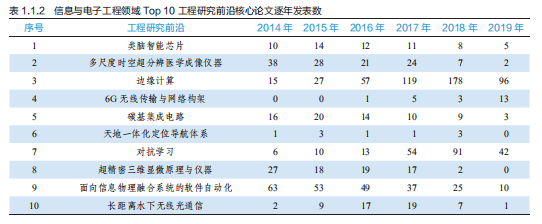
To address the existing issues of low real-time performance, poor security, and high energy consumption in cloud computing models, it is crucial to design a set of technologies centered on edge computing and cloud-edge collaborative scheduling for the real-time processing of massive edge data. In recent years, edge computing has gained widespread attention in academia and industry. In 2016, ACM and IEEE jointly sponsored and initiated the ACM/IEEE Symposium on Edge Computing (SEC). In 2017, Amazon released the Greengrass platform, supporting the deployment of machine learning services at the edge, followed by cloud platform providers Google, Microsoft, Alibaba Cloud, and Baidu, each releasing their own edge computing software and hardware platforms. Open-source software projects like EdgeX and KubeEdge have actively promoted edge computing, having a significant impact in the open-source community, academia, and industry.
Research on edge computing technology mainly focuses on the following four directions:
(1) Edge computing system platforms. The edge computing environment is characterized by strong hardware and software heterogeneity, low reliability, and limited resources. Existing cloud computing software architectures struggle to meet the reliability, real-time, and dynamic application requirements. Therefore, it is necessary to design edge computing system platforms tailored to different application scenarios, and to tackle key issues such as flexible customization of edge services, efficient utilization of distributed computing resources, and high real-time reliability.
(2) Cloud-edge task collaborative scheduling mechanisms. Cloud computing and edge computing each have their advantages and disadvantages. Cloud computing offers strong computing power and high reliability, while edge computing provides high real-time performance and security. Cloud-edge collaborative computing can combine the advantages of both computing models. Additionally, due to the strong heterogeneity of edge devices, with varying computing and storage capabilities, edge computing systems need to perform cloud-edge collaborative scheduling based on task types, edge device capabilities, network bandwidth conditions, etc., to improve system operational efficiency. Achieving seamless and efficient task migration between cloud centers and edge devices is a key research issue.
(3) Edge intelligent algorithms. How to efficiently implement artificial intelligence and machine learning algorithms on resource-constrained edge devices is a challenge. Therefore, research on adaptive optimization mechanisms for edge intelligent algorithms is essential, aiming to effectively reduce the computational resource overhead of intelligent algorithms while maintaining algorithm accuracy, and to design scenario-related intelligent algorithms as needed.
(4) Innovative applications of edge computing. The development of edge computing technology relies on important and critical applications. Based on edge computing system platforms and utilizing key technologies such as cloud-edge collaborative scheduling and edge intelligent algorithms, a series of critical applications of edge computing can be realized, including intelligent video surveillance, autonomous vehicles, smart factories, and structural monitoring of smart buildings. Through specific application scenarios, the edge computing system architecture can be perfected, a series of critical technologies can be overcome, and potential challenges and opportunities can be further discovered.
The distribution of the main producing countries of core papers in the engineering research frontier of “Edge Computing” is shown in Table 1.2.9. The research on edge computing has gained widespread attention in academia and industry, with China accounting for nearly 50% of the core papers globally. The United States accounts for nearly 30%, while the United Kingdom and Canada each account for about 10%. China’s main international cooperation partners are the United States, the United Kingdom, and Canada, with more balanced cooperation among other countries (see Figure 1.2.5). The institutions producing core papers are also relatively concentrated (see Table 1.2.10 and Figure 1.2.6). In terms of the number of cited papers (see Table 1.2.11), China accounts for nearly 40%. Among the top 10 institutions producing cited papers, 9 are from China (see Table 1.2.12), indicating a high level of attention to edge computing in China. Beijing University of Posts and Telecommunications, Xi’an University of Electronic Science and Technology, and Huazhong University of Science and Technology all focus on mobile edge computing as a core research direction, while also addressing the application research of edge computing in specific scenarios such as the Internet of Vehicles and intelligent video processing.
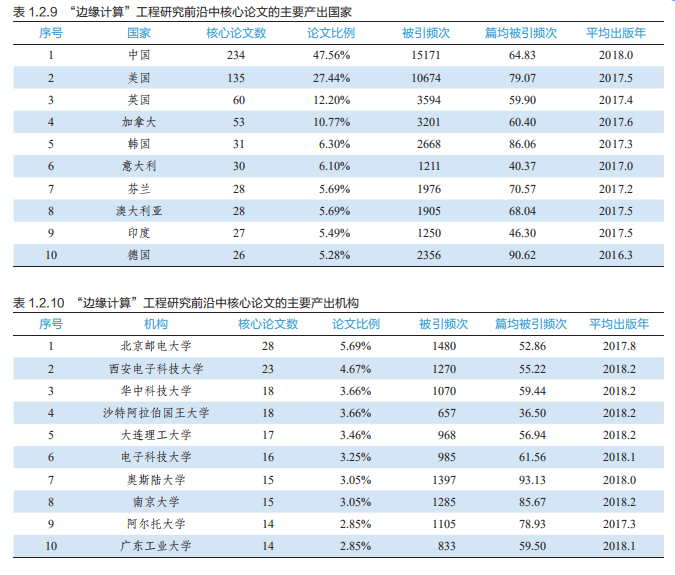
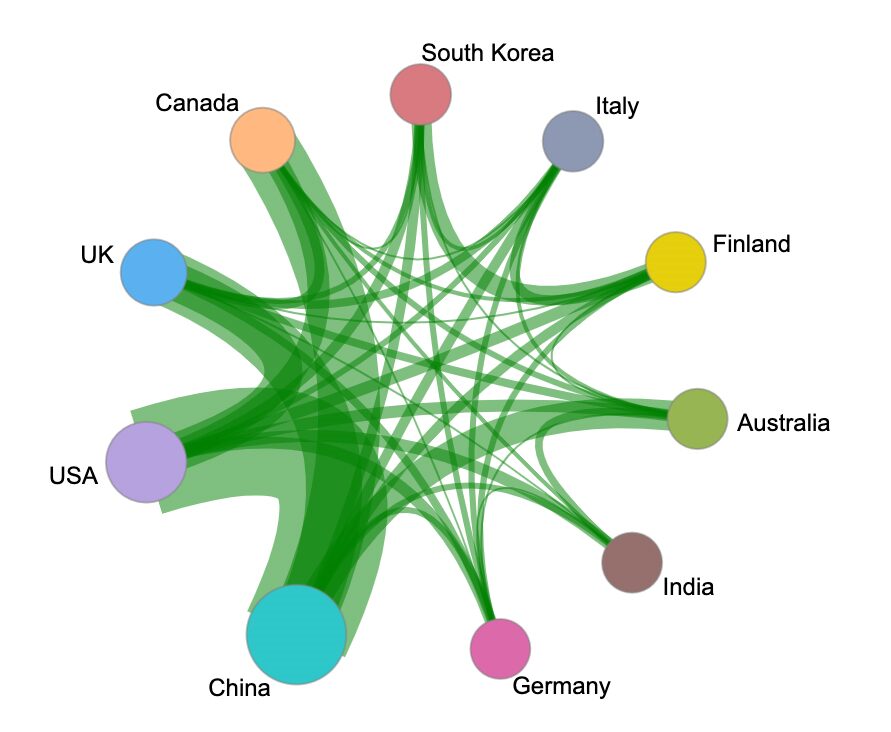
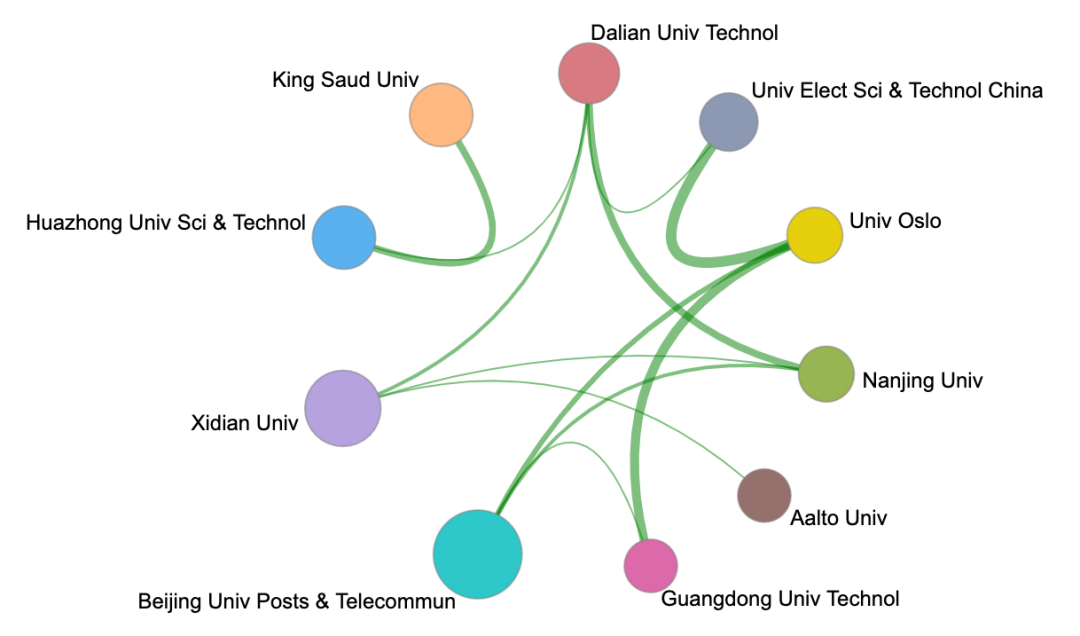
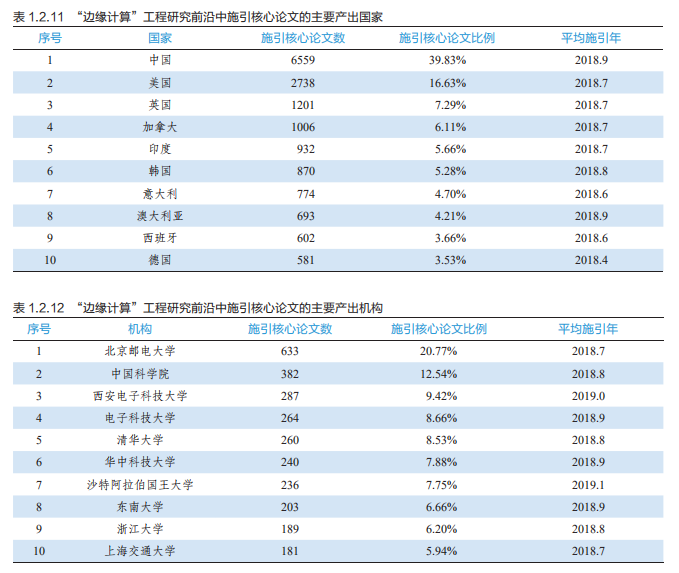

Related:
1. Understanding The Frontiers of Global Engineering: Brain-like Intelligent Chips
2. Understanding The Frontiers of Global Engineering: Multi-scale Temporal and Spatial Super-resolution Medical Imaging Instruments

About This Journal
Frontiers of Information Technology & Electronic Engineering (abbreviated as FITEE, Chinese name 《信息与电子工程前沿(英文)》, ISSN 2095-9184, CN 33-1389/TP) is a comprehensive English academic monthly journal in the field of information electronics, indexed in SCI-E and EI, with the latest impact factor of 1.604, entering the JCR Q2 zone. It originated from the “Journal of Zhejiang University (English Edition) C: Computer and Electronics,” founded in 2010, and was renamed in 2015. It is currently the only journal of the Information and Electronic Engineering Division of the Chinese Academy of Engineering. It covers fields such as computer science, information and communication, control, electronics, and optics. The types of articles include research papers, reviews, personal viewpoints, and commentaries. The current editors-in-chief are Academicians Pan Yunhe and Lu Xicheng of the Chinese Academy of Engineering. The journal implements an international peer review system, with initial feedback generally provided within 2-3 months. Once accepted, articles will be published online quickly.
In 2019, it was awarded support from the Excellence Action Plan project launched by the China Association for Science and Technology and seven other ministries (Tiered Journal).
Official Website:http://www.jzus.zju.edu.cn
Journal Springer Homepage:
http://www.springer.com/computer/journal/11714
Online Submission:
http://www.editorialmanager.com/zusc
For more information, please see: FITEE’s Impact Factor Increased by 55%, First Time Entering Q2 Zone
|
Computer Science and Technology Academic Group |
Optical Engineering and Technology Academic Group |
|
Control Science and Technology Academic Group |
Information and Communication Academic Group |
|
Power Electronics Academic Group |
Artificial Intelligence Academic Group |
This public account is the official WeChat account for the journal “Frontiers of Information Technology & Electronic Engineering” (SCI-E, EI indexed journal). Its functions include: disseminating academic articles from the journal; providing convenient services for associated scholars (readers, authors, reviewers, editorial board members, etc.); releasing information related to academic writing, review, editing, and publishing; introducing academic figures, thoughts, and achievements in the field of information and electronic engineering, showcasing cutting-edge scientific research progress; and providing a friendly interactive platform for scholars in this field both domestically and internationally.
